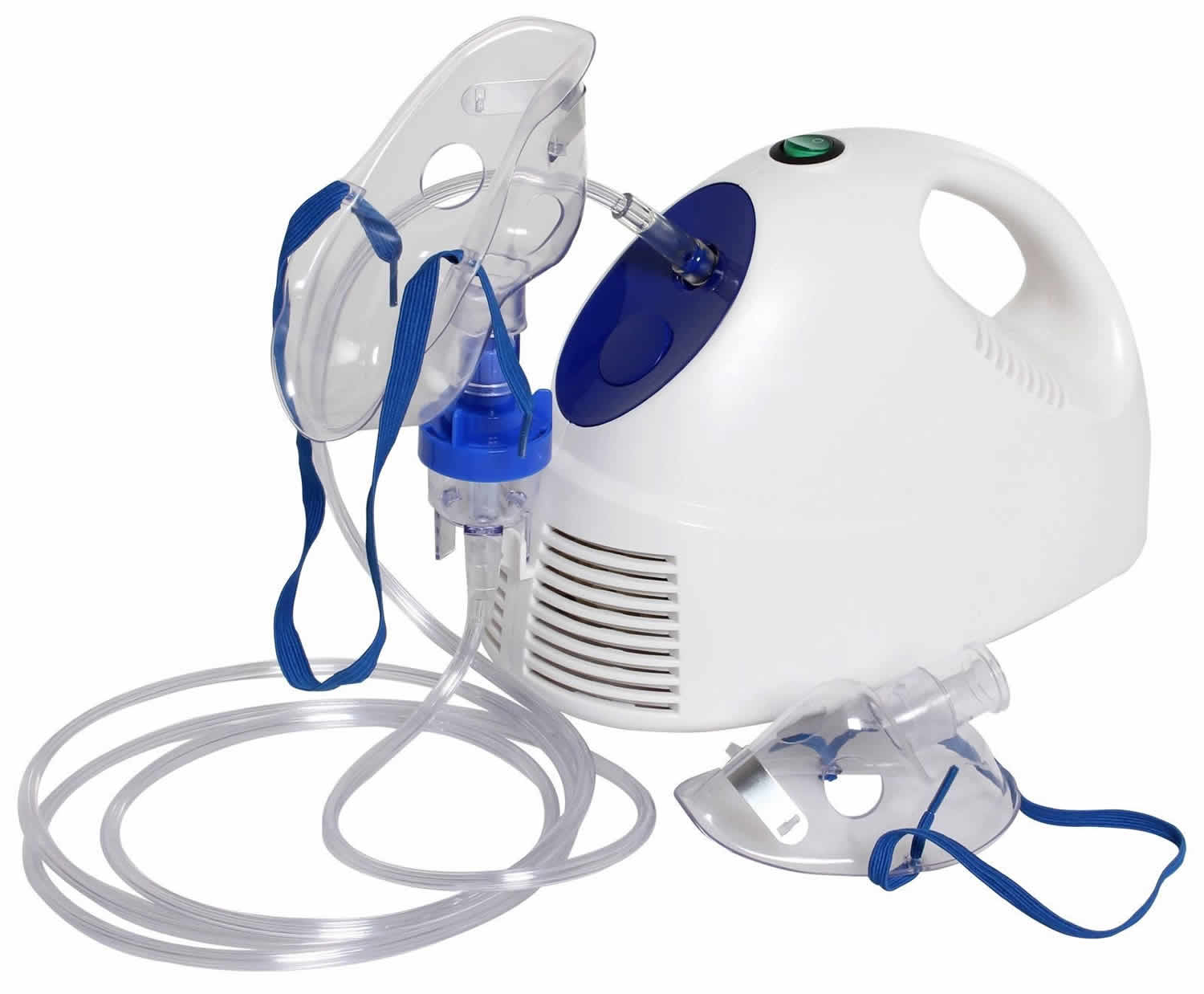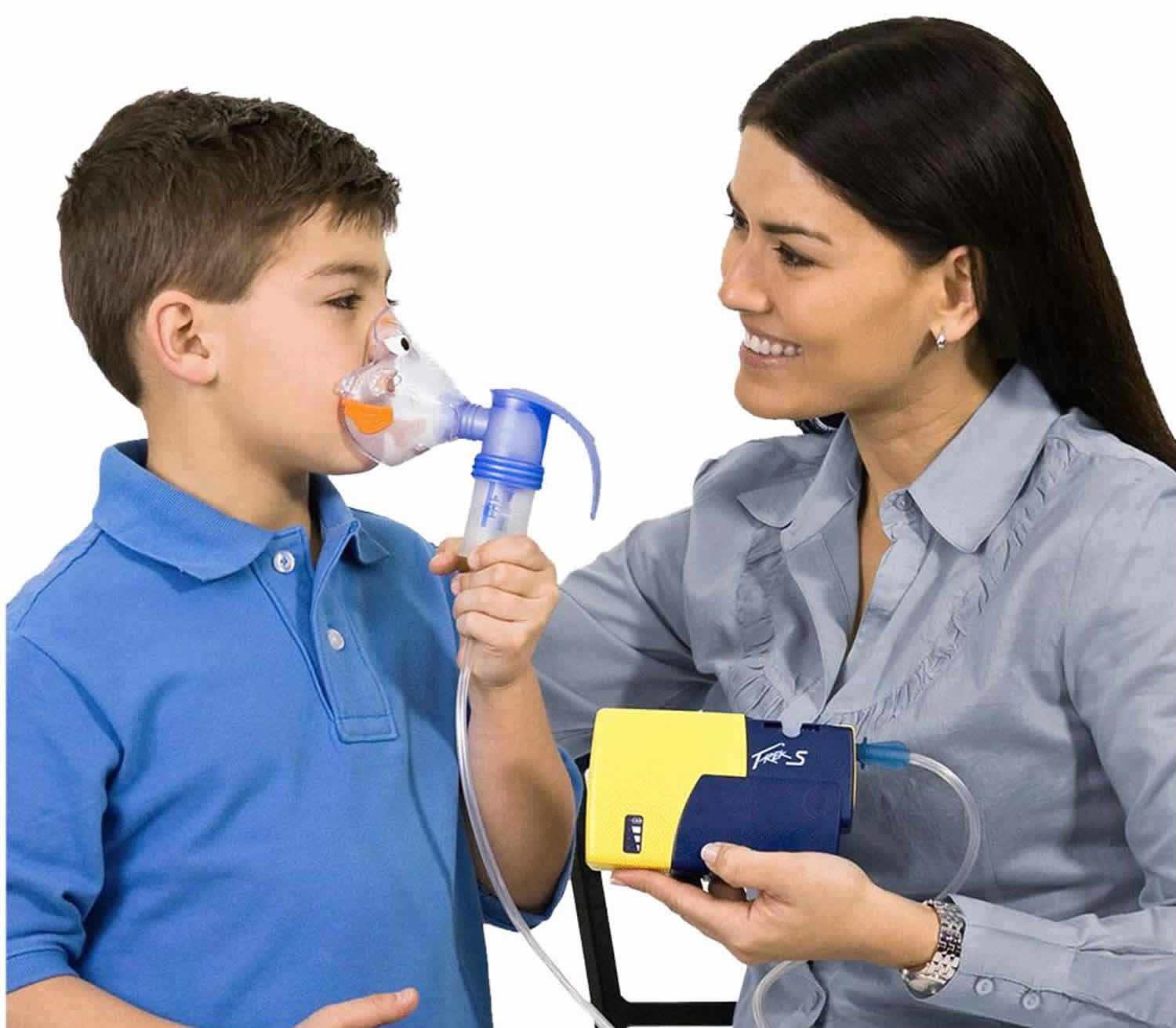Contents
What is a nebulizer
A nebulizer is a pump that turns medicine into a fine mist that can then be inhaled through a tube (mouthpiece) or face mask that fits over your nose and mouth.
For most people, inhalers and spacer devices are an easier, faster and more convenient way to inhale medicines – including during a flare-up or exacerbation. An inhaler with a spacer also reduces the risk of getting side effects from your medicines.
What is a nebulizer used for?
A nebulizer is useful for people who:
- Are unable to use an inhaler or other device because of confusion, hand weakness or coordination problems 1
- Have severe difficulty breathing in a hospital setting or ambulance (e.g, severe exacerbations of chronic obstructive pulmonary disease or COPD) 2.
- Are young children or infants in emergency situations 3.
Nebulizers don’t work better than inhalers.
Inhaling several puffs of reliever medicine using a metered-dose inhaler with a spacer has been shown to be at least as effective as inhaling the same dose via a nebulizer in patients with asthma 4.
In fact, using a puffer with a spacer is a faster way of delivering the medicine to the lungs than using a nebulizer
Figure 1. Nebulizer machine
How to use nebulizer
Two medicines can be inhaled through a nebulizer at the same time, but some solutions may not mix well together.
If you are using a nebulizer at home:
- Check with your doctor, pharmacist, practice nurse or the consumer medicine information (CMI) for your medicine to find out whether you can mix your nebulised medicines and how this should be done.
- Using a face mask with a nebulizer may cause your eyes and skin to react to the inhaled medicine. To reduce the chance of side effects, protect your eyes and wash your face after use, or use a mouthpiece rather than a mask.
Looking after your nebulizer
If you use a nebulizer at home, make sure it is properly cleaned and maintained according to the manufacturer’s instructions. This will ensure that you get the dose of medicine you need. Using a nebulizer that isn’t well cleaned or maintained also increases your risk of getting an infection from the machine.
To correctly clean and maintain your nebulizer it is important to:
- clean all of the separate parts after each use
- replace the tubing and mask (or mouthpiece) frequently (usually about every 3 months)
- check, clean and replace the filters regularly, usually about every 6 to 12 months
- have the nebulizer machine pump serviced every 6 to 12 months to make sure it is producing the right pressure.
How to use Asthma Nebulizer
A nebulizer is a machine that delivers medicine in a fine, steady mist. It is easy and pleasant to breathe the asthma medicine into your lungs this way. If you have asthma, you may not need to use a nebulizer. You may use an inhaler instead, which is usually just as effective. But a nebulizer can deliver medicine with less effort than an inhaler. You and your doctor can decide if a nebulizer is the best way to get the medicine you need. The choice of device may be based on whether you find a nebulizer easier to use and what type of medicine you take.
To keep your asthma under control, it is important to take your asthma medicine as prescribed by your doctor or other health care professional and to use the proper technique to deliver the medicine to your lungs. If you don’t use your asthma nebulizer correctly, you won’t get the medicine you need.
Most nebulizers are small, so they are easy to transport. Also, most nebulizers also work by using air compressors. A different kind, called an ultrasonic nebulizer, uses sound vibrations. This kind of nebulizer is quieter, but costs more.
Here are general steps for how to use and clean a asthma nebulizer. Be sure to read the instructions that come with your nebulizer. Ask your doctor, pharmacist, or other health care professional (such as nurse practitioner, physician assistant, nurse, respiratory therapist, or asthma educator) to show you how to use your nebulizer. Review your technique at each follow-up visit.
- Wash hands well.
- Put together the nebulizer machine, tubing, medicine cup, and mouthpiece or mask according to manufacturer’s instructions.
- Put the prescribed amount of asthma medicine into the medicine cup. If your medicine comes in a pre-measured capsule or vial, empty it into the cup.
- Place the mouthpiece in your mouth and close your lips around it to form a tight seal. If your child uses a mask, make sure it fits snugly over your child’s nose and mouth. Never hold the mouthpiece or mask away from the face.
- Turn on the nebulizer machine. You should see a light mist coming from the back of the tube opposite the mouthpiece or from the mask.
- Take normal breaths through the mouth while the machine is on. Continue treatment until the medicine cup is empty or the mist stops, about 10 minutes.
- Take the mouthpiece out of your mouth (or remove mask) and turn off the machine.
- If using an inhaled corticosteroid, rinse mouth with water and spit it out. If using a mask, also wash the face.
How To Clean and Store Asthma Nebulizer after each treatment:
- Wash hands well.
- Wash the medicine cup and mouthpiece or mask with warm water and mild soap. Do NOT wash the tubing.
- Rinse well and shake off excess water. Air dry parts on a paper towel.
Once a week:
Disinfect nebulizer parts to help kill any germs. Follow instructions for each nebulizer part listed in the package insert. Always remember:
- Do NOT wash or boil the tubing.
- Air dry parts on a paper towel.
Between uses:
- Store nebulizer parts in a dry, clean plastic storage bag. If the nebulizer is used by more than one person, keep each person’s medicine cup, mouthpiece or mask, and tubing in a separate, labeled bag to prevent the spread of germs.
- Wipe surface with a clean, damp cloth as needed. Cover nebulizer machine with a clean, dry cloth and store as manufacturer instructs.
- Replace medicine cup, mouthpiece, mask, tubing, filter, and other parts according to manufacturer’s instructions or when they appear worn or damaged.
Figure 2. Asthma nebulizer with a mask (for young children)

Figure 3. Asthma nebulizer with a mouthpiece (for teens and adults)

- Guidelines for the use of nebulizers in the home and at domiciliary sites. Report of a consensus conference. National Association for Medical Direction of Respiratory Care (NAMDRC) Consensus Group. Chest. 1996 Mar;109(3):814-20. https://www.ncbi.nlm.nih.gov/pubmed/8617094[↩]
- Chronic obstructive pulmonary disease in over 16s: diagnosis and management. National Institute for Health and Care Excellence. https://www.nice.org.uk/guidance/CG101[↩]
- Australia’s National Guidelines for Asthma Management. https://www.asthmahandbook.org.au/[↩]
- Cates CJ, Welsh EJ, Rowe BH. Holding chambers (spacers) versus nebulisers for beta‐agonist treatment of acute asthma. Cochrane Database of Systematic Reviews 2013, Issue 9. Art. No.: CD000052. DOI: 10.1002/14651858.CD000052.pub3 https://www.cochranelibrary.com/cdsr/doi/10.1002/14651858.CD000052.pub3/full[↩]






